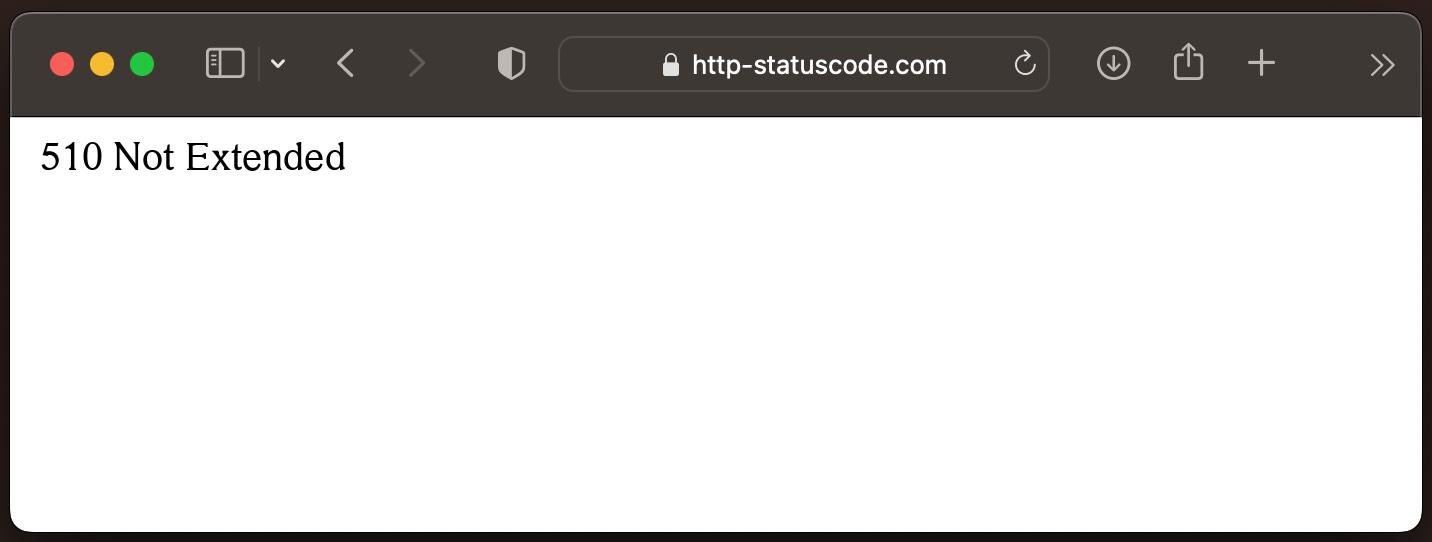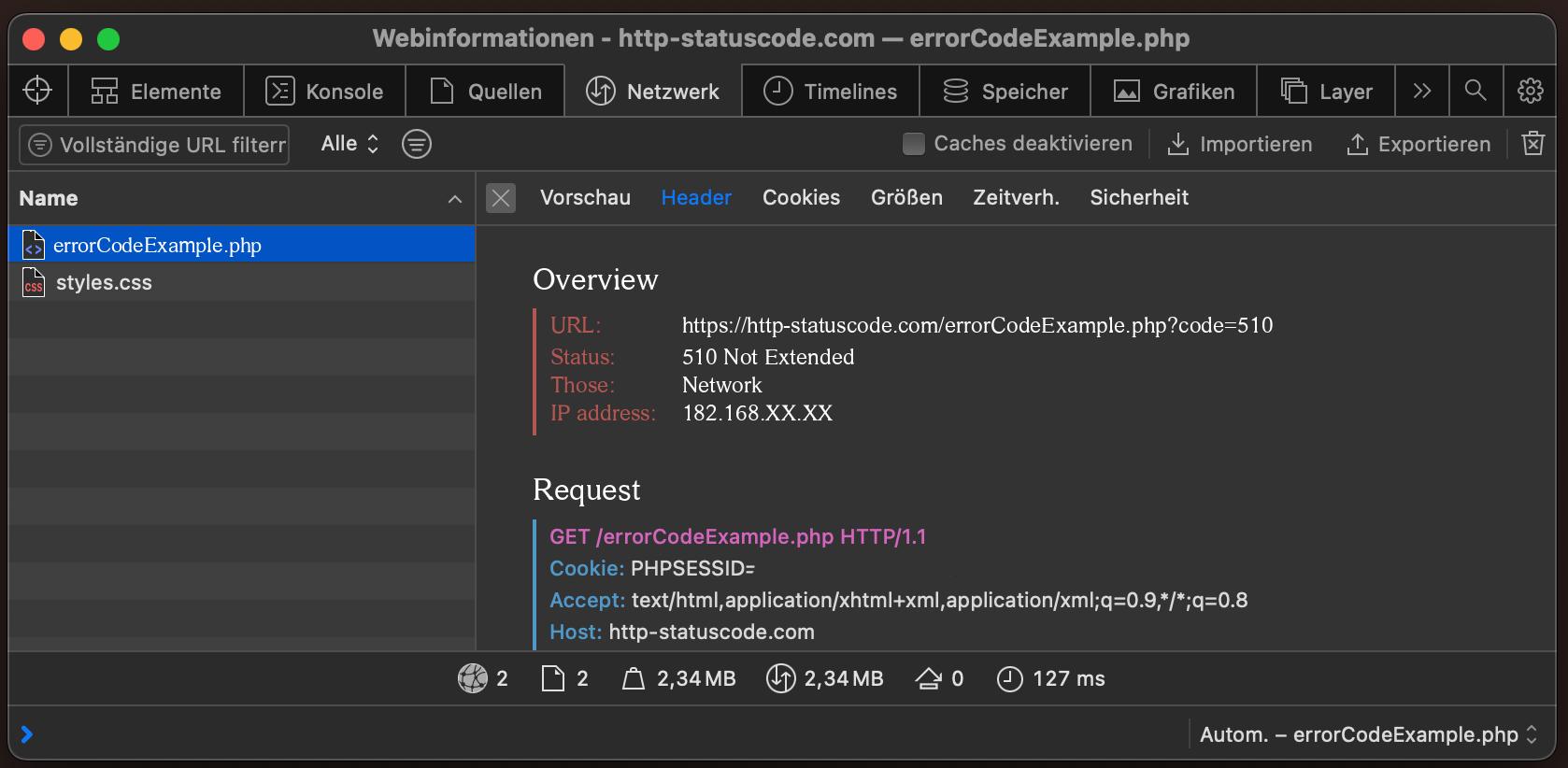Specification of the HTTP status code 510
Source / Quote by: The 510 Not Extended HTTP Status Code is specified by section 7 of RFC2774.
HTTP-Protocol
How to throw a 510 statuscode with PHP?
To throw the HTTP status code 510 on a web page, the PHP function http_response_code can be used. The syntax is as follows: http_response_code(510) (PHP 5 >= 5.4.0, PHP 7, PHP 8)
Test the 510 HTTP status code
In order to be able to display the HTTP status code (in this case 510 Not Extended) and other information on the client side, the development console must be opened with F12. Afterwards you have to navigate to the tab "Network". Now you can open the page, in the network tab you should see the web page (example index.php). This must be selected and then the Herder section must be selected. Here the user will see the following result:

URL: https://http-statuscode.com/errorCodeExample.php?code=510
Status: 510 Not Extended
Those: Network
IP address: XX.XX.XX.XX

How to create a custom error page for the 510 status code
Apache Webserver
The web server "Apache" is one of the most popular web servers on the Internet. To create an own 510 Not Extended error page in "Apache", the following change must be made in the following file.
NGINX Webserver
Similar to the web server "Apache", "NGINX" is also widely used on the Internet. To create your own 510 Not Extended error page in "NGINX", the following change must be made in the following file.
location = /510.html {
root /usr/share/nginx/html;
internal;
}
Browser compatibility of the 510 status code
| Chrome | no data |
| Edge | no data |
| Firefox | no data |
| Opera | no data |
| Safari | no data |
| Chrome Android | no data |
| Firefox for Android | no data |
| Opera Android | no data |
| Safari on iOS | no data |
| Internet | no data |
| WebView Android | no data |
